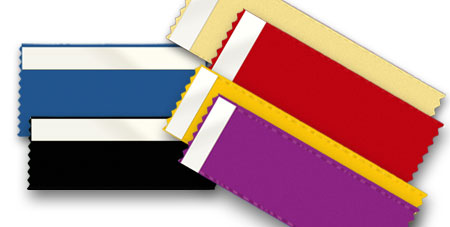Building trust between a company and a consumer is essential to business. All companies, regardless if they are organizations or individuals, should continually work on creating a culture of mutual trust. A trusting culture helps make challenging conversations easier, teams more integrated and employees more engaged. It also helps keep consumers loyal to a company’s brand.
“When people respect you as a person, they admire you. When they respect you as a friend, they love you. When they respect you as a leader, they follow you.”
–John C. Maxwell, The 21 Irrefutable Laws of Leadership: Follow Them and People Will Follow You

Trust is crucial for building strong relationships, especially in business. When people trust a company, employees instinctively work harder and listen better. In turn, this makes customers more willing to forgive mistakes or misunderstandings. Companies need to be reliable and follow through on commitments. Trust comes in three forms: confidence in the completeness of a company’s knowledge, skills and abilities.
Building Trust with Knowledge
Communication is at the core of all relationships, and it should be no different with employees, colleagues and consumers. When building a relationship with customers, business owners can excel when they take pride in what they know. And by sharing this knowledge with their employees, business owners empower so the business will run smoothly.
Communicating your company’s knowledge with consumers builds their trust in your brand. It shows them that you know what you’re doing and that you can do it well. Proving your knowledge of your business (service or product) helps customers to know and trust your process. A February 2019 Gallup survey revealed that “trust remains a vital form of business currency, but customers rely on different signals to convey a company’s trustworthiness — including, in many cases, a wealth of information about its ethical track record and the experiences of its customers and employees.”
Companies who work on building trust on a daily basis in routine interactions with customers, consistently delivering on their promises or going to great lengths to rectify the situation when they cannot. They behave as if their customers’ satisfaction and well being are their most important considerations, leaving customers with a feeling of partnership rather than adversity.
Trust in Skills
Doing a job well is only one important step toward achieving your business goals. Whether you have a product or provide a service, your skills are what will keep you in business. No matter what your business offers, customers learn to trust in your skill set, and that is what keeps them returning. So, make sure that you continue to build on your business skills.
Consumers don’t just buy your product or service. They are only with your business because they trust how you make them feel. They also trust how you provide solutions to their problems. Yes, this means that customer needs are typically emotional, not logical. The more you know about each of your customers, the better you will be at communicating with them and meeting their needs.
Every transaction your customer has with you is actually an entire journey. At every step of this journey, there is an opportunity to either delight your customer or have your customer suffer a pain point.
A refined skill set will drive trust because it demonstrates that your business has the needed competence and expertise. Your skill set will drive trust because it provides tangible evidence of your abilities and knowledge of what you do. When you show that you have your specific skill set, it means you have invested time and effort into developing your knowledge and abilities. This, in turn, will inspire confidence in your customers and lead them to trust your abilities.
Trust in Ability
When a business goes out of its way to prove it has the abilities it says it does, it shows its customers that the company can be trusted. Ability helps with building trust because it provides evidence that your business can deliver on its promises. It shows customers that you have the means and skills to achieve their needs no matter what they need. This, in turn, inspires customer confidence and fosters trust in your business.
Inspiring trust and confidence in customers should be one of your primary goals. So, if your business has the ability to perform the service or provide the product you advertise, that means you have the necessary skills, knowledge and resources. This will prove to consumers that they should trust you to make decisions that best suit their needs when they choose your company.
Consistently demonstrating competence and proficiency in your company’s abilities instills confidence in customers and, in turn, builds this needed trust. Truthfulness, responsibility, unification, steadfastness and thankfulness are the foundations required for trust. When your customers see you consistently displaying these qualities, their trust in your abilities will continue to build.
Make sure you always give everything you have to your job, no matter what you do. No matter your position or standing in your company, doing good work will help others see their value in the company. Being a positive influence will help you take pride in your job. Show a hunger for learning what your company offers, and you will be noticed for growth opportunities your company may offer. Engage with your job and find that you not only take pride in a job well done but also that you love what you do.
Dave Wendland, VP Strategic Relations at HRG, says the following:
Truthful: Honesty, integrity and consistent actions undeniably lead to trust.
Consistency in your delivery of materials, the way you treat clients and the manner in which you operate your business day in and day out can truly set you apart in the market.
Responsibility: Establish corporate activities with the main purpose of benefiting external individuals, a community or the environment.
For some organizations, social consciousness or “doing the most good” are simply words that are written on a wall. But it needs to be a way of life. This can be as simple as your entire team accepting responsibility for outcomes for your clients, community and co-workers.
Unifying: Demonstrative focus on a client and brand’s specific needs and ensuring that all members of the team are sincerely working together toward a common goal.
Teamwork is best exemplified by a group of individuals all pulling in the same direction and moving toward a common goal. Although unique individuals are departmentalized from a structure standpoint, when it comes to client needs, you should move as one.
Steadfast: Be reliable, almost predictable, in how you approach business and treat customers.
Nothing gives me more delight in our company’s delivery of a service than clients who comment that they “set their clocks by us.” In other words, keep your promises by doing what you say you’ll do and delivering it when you say you will.
Thankful: Customers are at the heart of why brands survive. Without them, a brand wouldn’t last. Authentic appreciation goes far.
Building Trust and Respect in the Workplace
What is a culture of respect, especially when it comes to your business? A culture of respect is when your business or organization admires the achievements of someone. This can include those such as an employee, a volunteer or any team member. Learn more about Creating a Culture of Respect in the Workplace.
“Trust is like the air we breathe—when it’s present, nobody really notices, but when it’s absent, everyone notices.” –Warren Buffett
So, what are you doing every day to strengthen the culture of respect and trust with your employees and customers?













